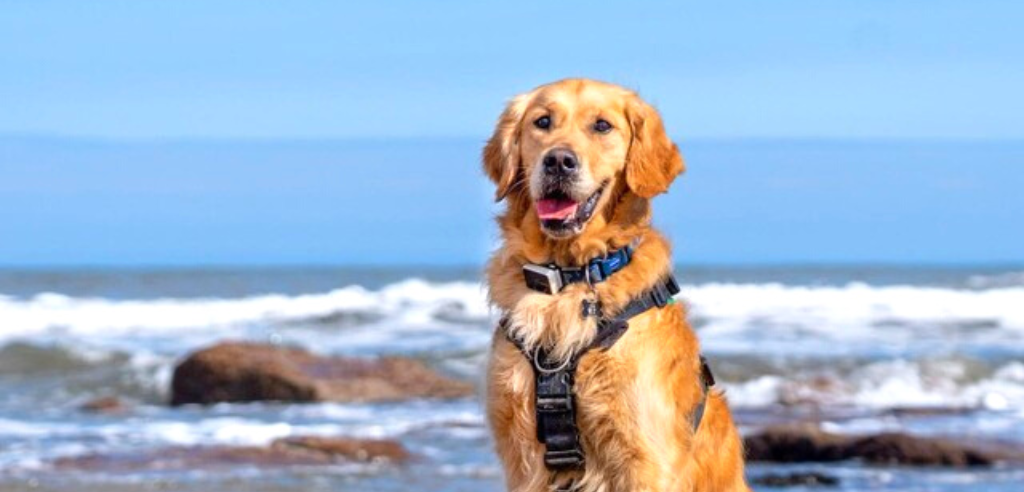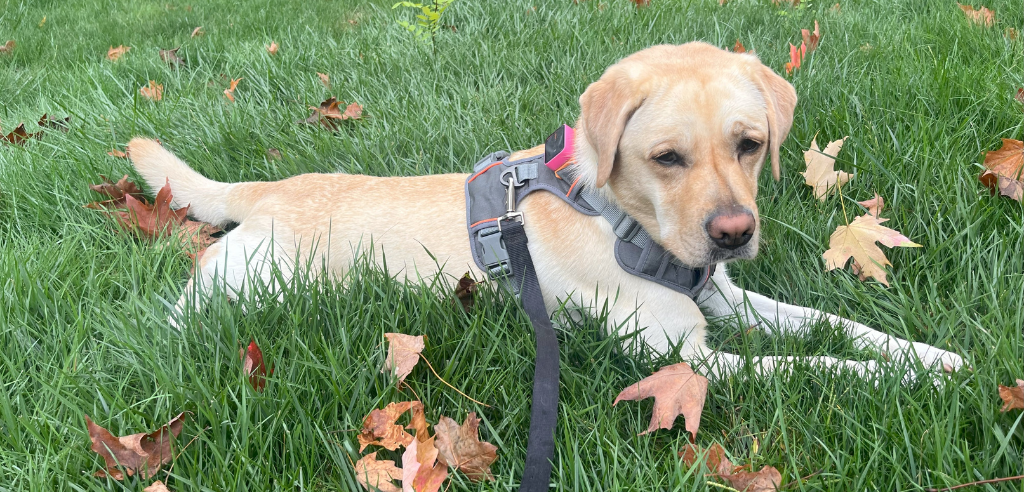Collar or harness? Both have their own pros and cons, and it can be pretty confusing to know which one is right for your dog.
For most dogs, a collar is the go-to choice for walkies but for some, a harness might be the more suitable option.
When making your decision, it’s important to think about the comfort of your dog and their needs.

Collars
Collars are worn around the dog’s neck and is where you attach an ID tag and lead when you take them for a walk. Collars are a great choice for dog training and protecting your pup from running off and getting lost or hurt.
There are a few different types of collars available:
A standard flat collar like the is the most common type of collar and it sits flat against the neck. These types of collars would not be suitable for dogs like whippets, who have heads smaller than their necks, making it easier for them to slip out of the collar and get away.
Our Pawfit 3 Series Collar features a built in tracker attachment base so you can easily and securely attach your dog’s Pawfit 3 GPS tracker.
A head collar has a strap that goes across the dog’s snout and behind their ears and can be a good tool for teaching your dog to walk nicely
Slip collars are designed to tighten around the neck, but not to choke, if the dog pulls on the lead. Slip collars are also a good option for dogs that tend to wiggle out of their collars

Harnesses
Although collars do provide an effective way to restrain your pet safely, harnesses are generally considered to be a more comfortable alternative. This is because a harness is designed to take the pressure of your dog’s neck and spread it across their chest and upper body. This is especially important if your dog pulls on the lead a lot when walking as wearing a collar can put a lot of pressure on their throat and neck and can result in injury. Wearing a harness instead can reduce this risk.
Harnesses are also recommended for puppies learning to walk on a lead as they prevent them getting tangled in the lead and potentially getting hurt.
Smaller dog breeds like pugs can be prone to injury from pulling or tugging on the leash. A harness disperses pressure over a larger area of their body, reducing strain on their neck and back.
Harnesses are also recommended for larger or stronger dogs as they can be a lot easier for your back and shoulders during walkies.

If your dog has breathing problems a harness is also recommended because collars can aggravate breathing issues by putting too much pressure on the neck.
The new Pawfit 3 Series Harness has been designed for both training sessions and daily walks and comes in sizes S-XL. It features a built in tracker attachment base so you can easily and securely attach your dog’s Pawfit 3 GPS tracker.



